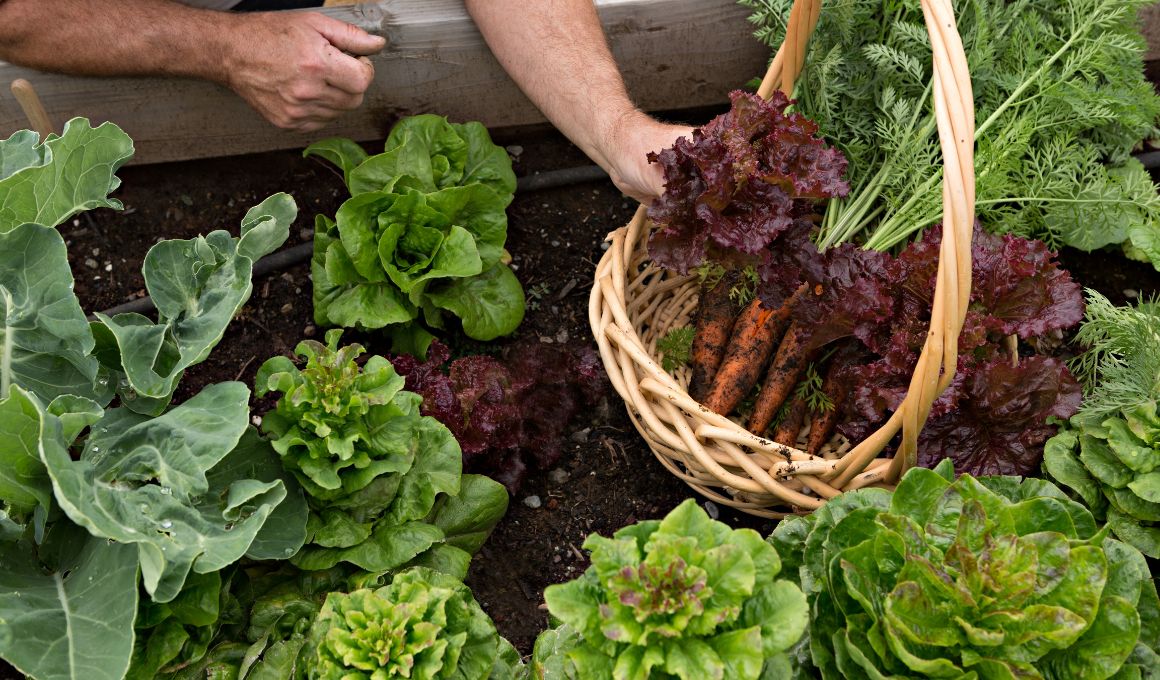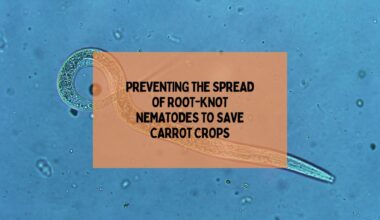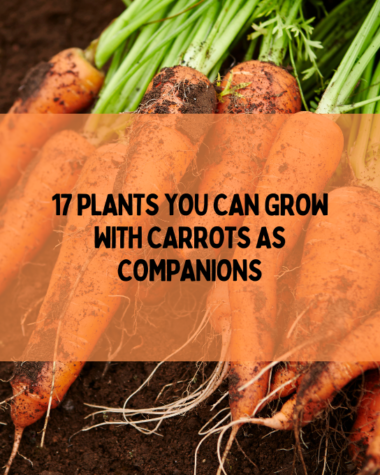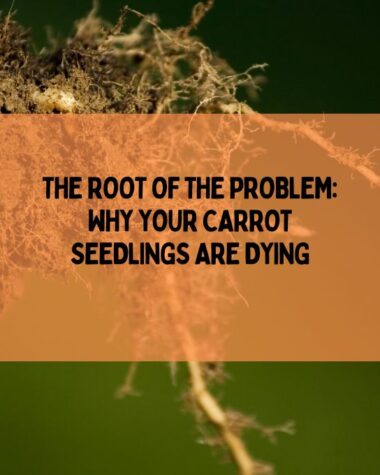Indoor carrot garden includes choosing the correct container, soil, and lighting and how to care for your carrots throughout the growing process—an easy way to grow carrots indoors.
Indoor gardening has become increasingly popular due to its numerous benefits. It allows individuals to grow fresh produce all year round, regardless of weather conditions and can be a fun and rewarding hobby.
One vegetable that can quickly be grown indoors is carrots. Carrots are rich in vitamins and nutrients and can be used in various recipes. Growing them indoors allows for greater control over the growing environment, which can result in healthier, tastier carrots. In this article, we’ll provide some tips for growing carrots indoors.
Preparation for Indoor Carrot Garden

Preparing for an indoor carrot garden involves several vital steps to ensure optimal growth and harvest. Here are some essential factors to consider:
- Choosing the correct container: Carrots need a deep container to accommodate long taproots. A container at least 12 inches deep and 12 inches wide is recommended. Additionally, the container should have good drainage to prevent waterlogging.
- Selecting appropriate soil: Carrots prefer loose, well-draining soil rich in organic matter. A mix of peat moss, perlite, and vermiculite can be a good choice for indoor carrot gardening. It is also essential to ensure the soil has a pH between 6.0 and 6.8.
- Understanding sunlight and water needs: Carrots need at least 6 hours of sunlight per day to grow properly. In the absence of natural sunlight, grow lights can be used. Overwatering can be a common mistake, so letting the soil dry out slightly before watering again is essential.
- Selecting the suitable carrot variety: Not all varieties of carrots are suitable for indoor growing. Choose a variety well-suited for container growing, such as ‘Thumbelina,’ ‘Nantes,’ or ‘Little Fingers.‘ These varieties are minor and require less space than wider varieties.
Following these tips, you can set yourself up for success when growing carrots indoors.
Related Read
- How To Harvest Cucumbers In Containers?
- Can You Grow Pumpkins In Containers?
- Best tomatoes to grow indoors – Pros of indoor tomato plants
Planting Carrots Indoors

Planting carrots indoors involves carefully preparing the soil and adequately managing seedlings. Here are some critical steps to follow:
- Preparing the soil: Before planting carrot seeds, it’s essential to ensure the soil is prepared correctly. This involves adding a layer of compost or fertilizer to the soil and mixing it thoroughly. The soil should be loose and fluffy to promote healthy root growth.
- Best practices for carrot seeds: Carrot seeds should be planted approximately 1/4 inch deep in the soil. It’s important to space the seeds out evenly to prevent overcrowding. Cover the seeds with a thin layer of soil and water lightly. Keep the soil moist but not waterlogged.
- Tips for managing the growth of indoor carrot seedlings: Once the seedlings emerge, it’s essential to thin them out to prevent overcrowding. This involves removing weaker seedlings to allow the stronger ones to grow correctly. Additionally, it’s essential to ensure the seedlings get enough light and water to promote healthy growth.
- Understanding when and how to thin indoor carrot plants: Thinning should be done when the seedlings are around 2 inches tall. Carefully remove the weaker seedlings, leaving the strongest ones to grow. It’s essential to avoid damaging the remaining seedlings during the thinning process.
By following these best practices, you can ensure healthy growth and a bountiful harvest from your indoor carrot garden.
Maintaining Indoor Carrot Garden

Maintaining an indoor carrot garden requires attention to temperature, watering, fertilization, pest and disease management, and proper plant support. Here are some critical tips for maintaining a healthy indoor carrot garden:
- Understanding the ideal temperature: Carrots grow best in cooler temperatures, around 60-70°F (15-21°C). It’s important to avoid extreme temperatures, as this can stunt growth or cause the carrots to bolt (produce flowers prematurely).
- Tips for proper watering and fertilization: Carrots require consistent moisture, but it’s important not to overwater them as this can lead to rot. Water the plants when the top inch of the soil feels dry. Fertilize every two weeks with a balanced fertilizer, and avoid over-fertilizing, as this can lead to excessive foliage growth at the expense of the carrots.
- Managing pests and diseases: Indoor carrot plants are susceptible to various pests and diseases, including aphids, root-knot nematodes, and fungal diseases like powdery mildew. Regularly inspect the plants for signs of damage, and treat any problems promptly with organic pest control methods or fungicides if necessary.
- Understanding how to support growth: As the carrots grow, they may need support to prevent them from bending or breaking under their weight. Use stakes or plant supports to keep the plants upright. Additionally, it’s important to thin the plants regularly to allow the remaining ones to grow correctly.
By following these guidelines, you can ensure healthy growth and a bountiful harvest from your indoor carrot garden.
Harvesting Carrots

Harvesting indoor carrots is a satisfying conclusion to the growing process. Here are some essential things to keep in mind:
- Determining the right time to harvest: Carrots can be harvested as soon as they are big enough to eat, usually between 2-3 months after planting. Check the size of the carrots by gently pulling back the soil around the base of the plant. The carrots should be about 1/2 inch in diameter before being harvested. Once they reach the diameter, they are ready to harvest.
- Best practices for harvesting: Use a garden fork or trowel to loosen the soil around the base of the plant, and gently pull the carrot out of the soil. Be careful not to damage the carrot, as this can reduce its storage life. Remove the green tops and rinse the carrots thoroughly.
- Understanding how to store indoor carrots after harvest: Once harvested, storing them properly is essential to extend their shelf life. Remove any excess moisture by patting the carrots dry with a towel. Store the carrots in a cool, dark place like a refrigerator or root cellar. Depending on the storage conditions, they can be stored for several weeks to a few months.
Following these best practices, you can enjoy a bountiful harvest from your indoor carrot garden and savor the sweet taste of fresh, homegrown carrots.
Also, Read
- Growing Nantes Carrots: Tips And Techniques For A Bountiful Harvest
- How To Grow Delicious Danvers Carrots?
- How To Grow Imperator Carrots?
Benefits of Growing Carrots Indoors
There are several benefits to growing carrots indoors, including:
- Fresh and Nutritious Produce: Indoor carrot gardening allows you access to fresh and nutritious produce year-round, regardless of the season or climate. Carrots are rich in vitamins, minerals, and antioxidants, making them an excellent addition to any diet.
- Control Over Growing Conditions: By growing carrots indoors, you have complete control over the growing conditions, including soil quality, water and nutrient intake, and lighting. This allows you to tailor the growing environment to the specific needs of your plants, resulting in healthier and more robust carrot plants.
- Space-saving: Growing carrots indoors saves space and can be an ideal option for those with limited outdoor gardening space or urban dwellers living in apartments or condos.
- Convenient and Accessible: With an indoor carrot garden, you can easily access fresh, homegrown produce right in your home. This is particularly convenient for those with busy schedules or mobility issues that challenge traditional outdoor gardening.
- Cost-effective: Growing your carrots indoors can be a cost-effective way to add fresh produce to your diet. It can also be a fun and rewarding hobby that allows you to develop your gardening skills and creativity.
Conclusion
Growing carrots indoors can be a rewarding and delicious experience. With the correct container, soil, sunlight, and watering techniques, you can successfully cultivate healthy and flavorful carrots in the comfort of your own home.
By managing pests and diseases, supporting the growth of plants, and following best practices for harvesting. You can enjoy the fruits of your labor all year round.
Happy Gardening!







